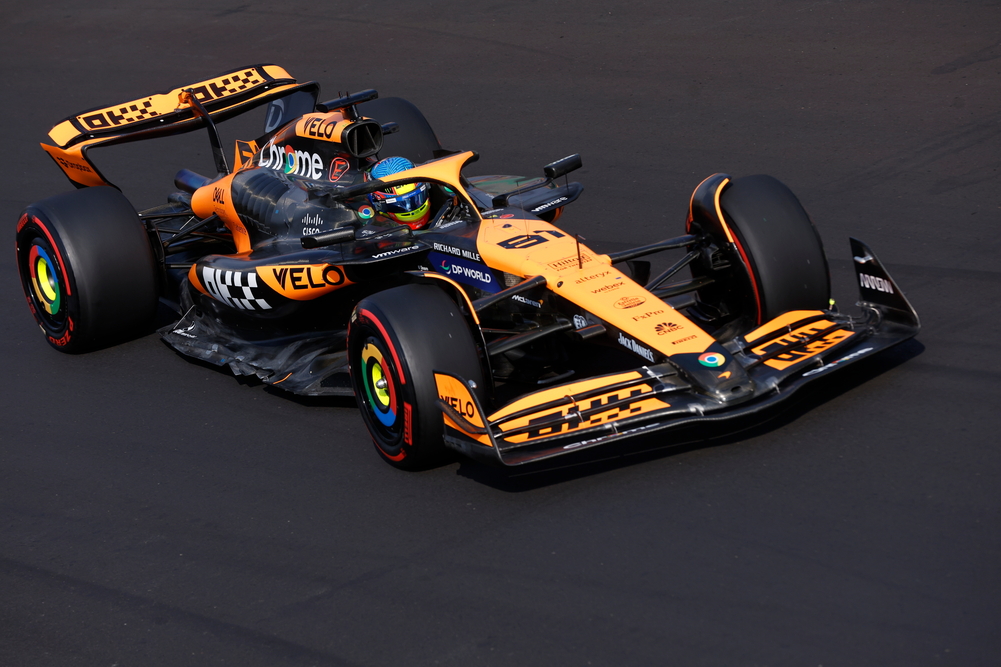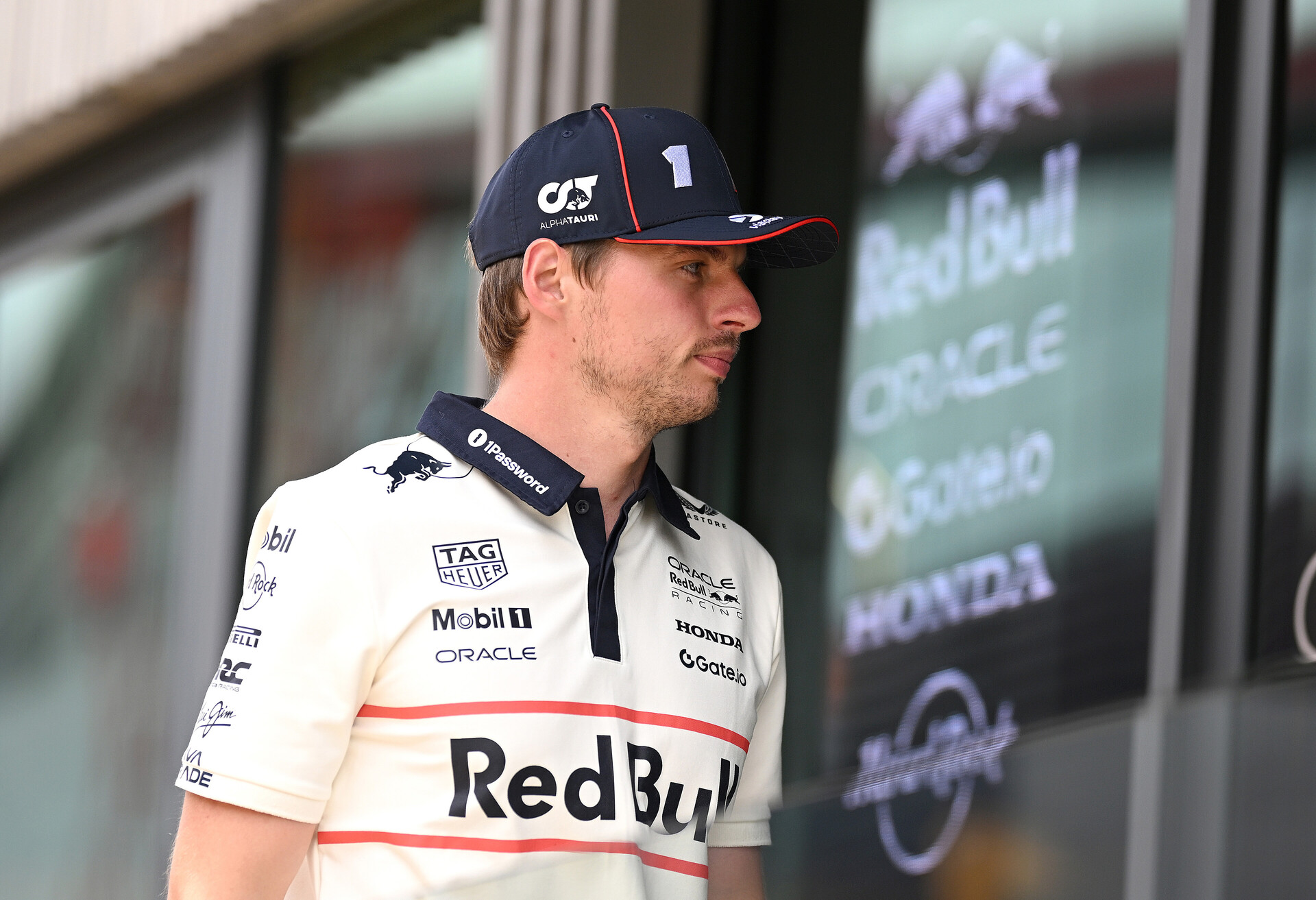The FIA has issued a statement addressing the ongoing scrutiny surrounding the front wings of the Mercedes W15 and McLaren MCL38, following concerns raised by rivals Red Bull and Ferrari. The issue revolves around the apparent flexing of the front wings on these cars, which, while passing the standard FIA load-bearing tests, have been questioned for potentially exceeding the spirit of the regulations.
Red Bull’s team principal, Christian Horner, emphasised that the matter was one for the FIA to resolve, stating that despite the wings passing the required tests, the wording of the regulations needed to be carefully considered. Ferrari’s team principal, Fred Vasseur, echoed this sentiment, confirming that he would raise the issue with the FIA’s single-seater director, Nikolas Tombazis. Vasseur also stressed the importance of respecting the FIA’s decision, noting that Ferrari would address the matter internally with the regulatory body.
In response, the FIA acknowledged the complexities associated with front-wing regulations, conceding that while no car currently breaches the rules, the organisation remains vigilant and is prepared to introduce further tests if necessary.
The FIA’s statement elaborated on the challenges posed by front-wing compliance:
“The FIA is examining front wings at every event with numerous checks (conformity of surfaces, conformity of deflections) with respect to the relevant F1 Technical Regulation. All front wings are currently compliant with the 2024 regulations.
“Since the Belgian Grand Prix, the FIA has acquired additional data during FP1 and FP2 sessions to assess dynamic behaviours through an FIA-mandated video camera which captures areas of the front wing which are not visible through the official FOM cameras.
“This exercise will continue at least up until Singapore to ensure every team will have been running the mandated FIA camera on different types of tracks (low, medium, high and very high downforce).
“This will ensure a large database allowing the FIA to draw the most objective picture of the situation and quantify differences between the various dynamic patterns observed on track.
“No component is infinitely stiff, which is the reason why there are load-deflection tests in the regulations.
“The front wing has been a challenging area throughout the years because the aerodynamic loading patterns between different competitors vary, and it is therefore difficult to find a load vector which will cover all types of front-wing construction.
“Other areas of the car, including rear wing and floor edges, have much more consistent aerodynamic loading patterns across the grid, making for a more universal load-deflection test.
“The FIA has the right to introduce new tests if irregularities are suspected. There are no plans for any short-term measures, but we are evaluating the situation with the medium and long-term in mind.”
Red Bull team principal Christian Horner remarked, “I think the regulations are very clear and that’s an FIA issue. Obviously, they are tested, and they pass, but then you have to look at the wording of the regulations.”
He also alluded to past instances where the FIA adjusted regulations mid-season, hinting that a similar situation could arise if necessary.
“If you remember back in ’21, certainly around Baku time, there was a change to the front wing regulations, even though our wings passed the test [at the time]. It’s an FIA issue, so we’ll leave it and trust in them to deal with it,” Horner added.
Ferrari’s team principal, Fred Vasseur, echoed the need for clarity, stating, “This is a discussion that I don’t want to have with you, I will have it with [FIA single-seater director] Tombazis. But we have to respect the decision of the FIA. We will have, again, the discussion. We have to deal [with] it internally with the FIA.”
The controversy has been fuelled by footage from the Italian Grand Prix, where the front wings of Mercedes and McLaren appeared to flex, rotate, and flap under certain conditions. Competitors have questioned whether these designs were pushing the boundaries of what is permissible. Ferrari and Red Bull, while acknowledging that the FIA has found the cars to be compliant, are seeking further clarification on the exact parameters of what is allowed. This is to ensure that they can exploit similar areas if necessary.
Red Bull motorsport advisor Helmut Marko emphasised the importance of this scrutiny, telling Austrian broadcaster ORF, “The front wing of McLaren and Mercedes must be analysed.”
The FIA has long been vigilant in controlling aerodynamic elasticity, with the technical regulations specifying how static loads should be applied to ensure compliance. However, teams are aware that as long as their wings pass these tests in the garage, additional flexibility on track can be utilised.
This understanding is crucial, as Mercedes technical director James Allison explained earlier this year regarding the design of their flexible front wing.
“I think that all of us are trying to ensure that we pass the FIA’s flexibility test. They put loads on and you’ve got to not move by more than an amount.”
Allison also highlighted the fine line between natural flexibility under load and designs specifically engineered to behave in particular ways at specific speeds. He said, “I don’t think it would be legit to have a thing that does stuff at given speeds.
“I think something that just bends the more load you put on it, that is what all materials do. So I think that’s the playground most people are in.”
In a technical directive (TD34) still considered valid, the FIA has clarified that it will not tolerate designs whose structural characteristics change under secondary parameters, such as temperature or aerodynamic load. This can produce different deflection characteristics on track compared to when stationary during FIA checks. This stance underscores the FIA’s commitment to maintaining a level playing field while allowing teams to innovate within the established rules.





